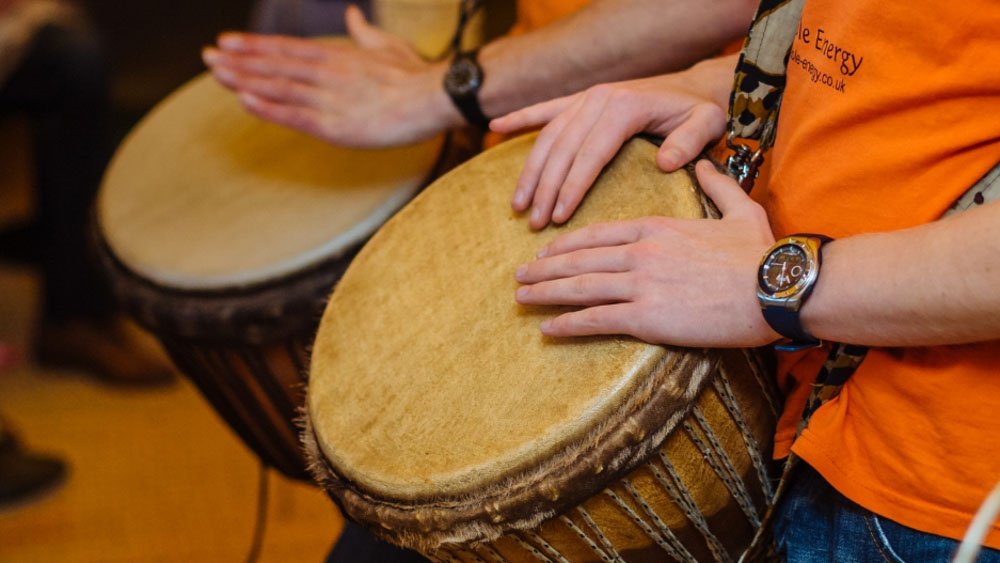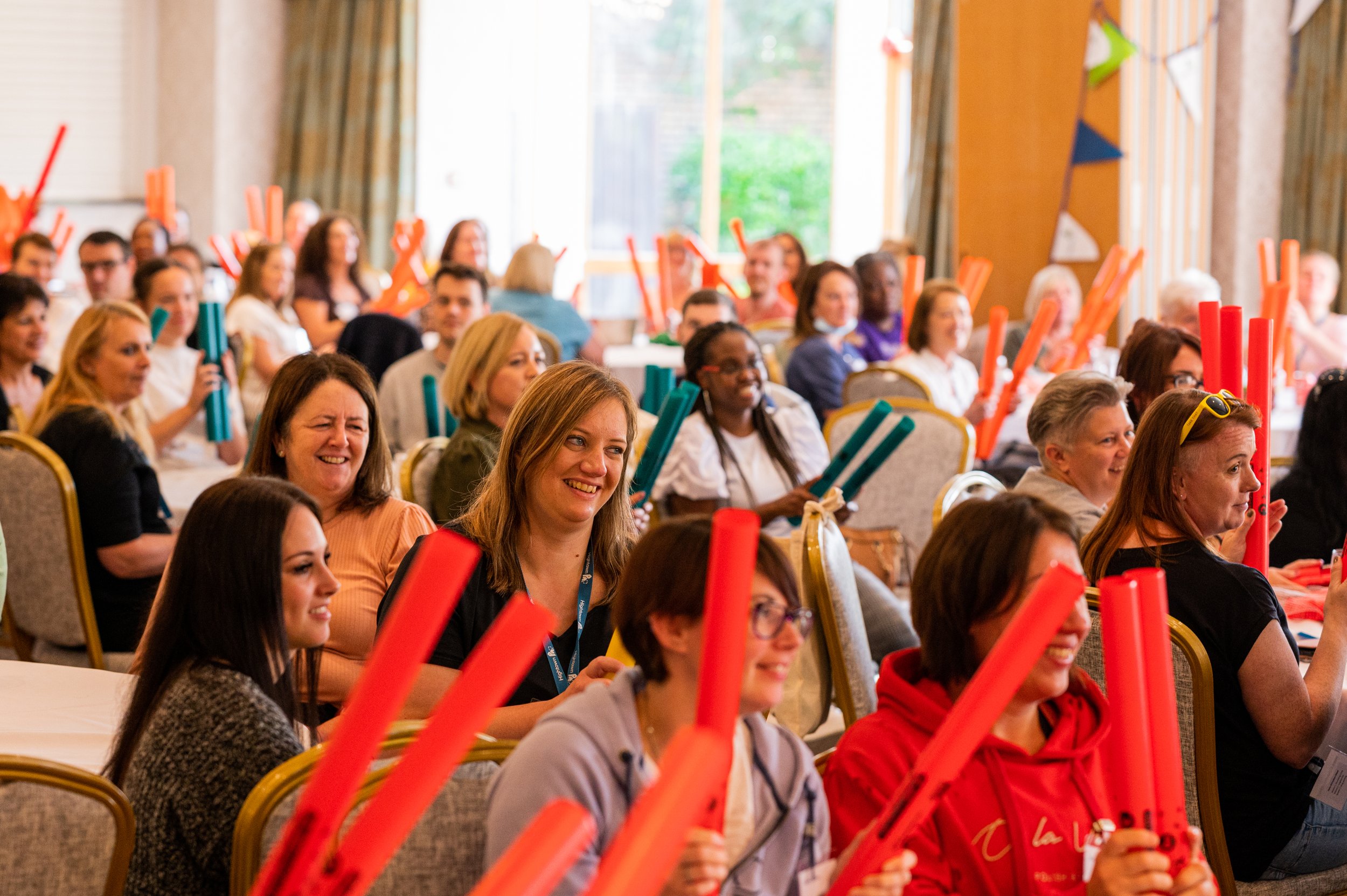How important is it to tap ones foot when playing African djembe drumming?
There are arguments backwards and forwards regarding its merits and pitfalls. Personally I think the eventual goal is to reach a place where no foot tapping is required at all - to reach a place where your body’s sense of the pulse has become completely internalised and your hearing and motor memory is ‘locked in’ to the overall rhythm arrangement. Many of the African musicians I have observed through the years have easily reached this stage in their playing. Having played at such an early stage in their life, their sense of the pulse has become complete second nature. That said, foot tapping is not alien to African musicians and in fact many musicians have the added ability to tap in more than one time signature to the same rhythm; switching from 4/4 to 12/8 during tricky solo phrases.
Using ankles bells is a great way for you to hear your pulse marked by your foot as you play.
Personally, I love foot tapping. It is such a great exercise. It helps you improve your ability to multi-task and create independence in your coordination. In my own practice, it is only when I can play rhythm patterns, solo phrases or break passages while keeping the independent beat tapping regularly and consistently that I truly feel in control in the music.
But foot tapping is just one way to mark the pulse against a pattern. You can also practice singing a rhythm while marking the pulse with hand claps; play a pattern with one hand while marking the pulse with the other or alternatively play a pattern while singing the pulse (something I had a go at recently and found rather tricky).
Whichever way you like to do it, playing a pattern against a pulse is really the best way of checking that you are hearing something correctly. Without a clear pulse being marked, an awful lot of time can be wasted along with lots of frustration as one realises that a rhythm you think you had nailed was being heard the ‘wrong way round’ because your sense of the pulse was misplaced.
Here is a perfect example of what can go wrong when the pulse is not defined in a rhythm. A few years ago I was in Senegal, West Africa where I was observing a drumming class with European students who were being taught the basics to a rhythm called dundunbe from a local musician. The problem really stemmed from a clash of cultural understanding between the western students and the African teacher. It started when the teacher demonstrated a rhythm on the dundun drum (large cylindrical bass drum played with a stick). The pattern he was playing had two pairs of double beats in the cycle that went “bubum bubum”; followed by a short rest and then another “bubum bubum”. The African teacher was an outstanding musician at the top of his game, but was less experienced in teaching African drumming to European musicians. He knew his material inside out as it had been literally ‘drummed’ into him his entire life. He instinctively knew where the beats fitted together in the music to such an extent that he in fact had no concept of ‘pulse’. Hence he began to demonstrate the rhythm without a pulse, thinking that if he just played it, the students would hear exactly what he heard.
However without a pulse provided, such as a hand clap or a foot being tapped, the students heard something completely different. When they heard the double beats, they heard the same beats as if you were listening to the “awimbawe” chorus in the classic song “The Lion Sleeps Tonight”. In this song the rhythm structure consists of double beats where the first of the doubles is before the pulse and the second is on the pulse. This plays out as “and one - and two – and three – and four….” (or if you prefer “awim bawe awim nawe…”). If this is all sounding like technical jargon, listen to the song to hear the “awim bawe” - that is the kind of rhythm the students were hearing. Meanwhile the teacher heard the beats the way they should be heard – not as ‘and one – and two’ but as double beats that were in between the pulse, so they go like “one AND A two AND A three…” The teacher and students played the same pattern for half an hour completely unaware that they were hearing it differently.
The trouble really started when a djembe pattern was introduced to play alongside the dundun pattern. This djembe pattern really defined the pulse which meant that when the teacher demonstrated the original ‘double beat’ pattern against this, the students heard something that was completely ‘turned upside down’. It was so different they in fact thought that the teacher had changed the rhythm which of course he hadn’t – he had simply introduced something that marked the pulse so it was heard in the correct way.
This episode not only shows how differently people from African and Western Cultures can approach music, but underlines how important it is for students to understand the pulse at the early stages. Likewise I think it is a good lesson for any djembe musicians at the top of their game (in Africa or elsewhere) who find themselves teaching a rhythm to beginners or intermediate. It is important to appreciate that if something is played without a pulse or another pattern to mark the pulse, you can’t assume that the students will be hearing what you will be hearing.
The device I currently use to mark the pulse with my foot when playing. I can't really recall what the device is called but it attaches to a drum pedal to create a sharp consistent clear sound - the clarity of which gets missed with ankle bells.
So that is why I am personally a big fan of foot tapping and regularly tie on ankle bells so I can hear my pulse or use a drum pedal to mark the pulse on a jam block while I play. I know it is not everyone’s cup of tea and yes I have met many teachers who don’t like it, but to me it is an essential way in to a rhythm which one day I hope to play without any foot tapping at all. Until then I continue shaking and tapping those feet!
Please contact us for more information on our services.















